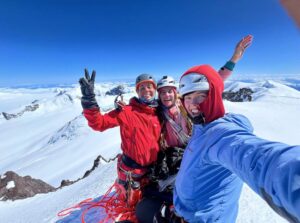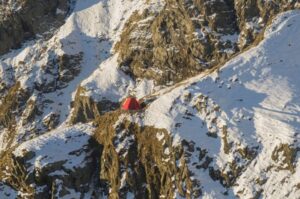When your ambition is to draw a picture of a bicycle across Europe by riding one along a meticulously planned, GPS-traced route, you’re understandably in for some work.
For one couple who did it — with their dog — the lift turned out to be even heavier than they thought. The payoff? “Relief”, according to Arianna Casiraghi.
Casiraghi and husband Daniel Rayneau-Kirkhope first met while they were both pursuing Ph.D.’s in Nottingham, England. They first set out to “draw” a 965km-wide bicycle across Europe in 2019, they told The Guardian. The mission forced the couple to give up their jobs as physics researchers to pedal approximately 7,250km through seven countries.
Why? From Switzerland, the duo said that they hoped “to draw attention to the scale of climate breakdown and persuade people to think about using bikes instead of cars for shorter trips.”
Two aborted attempts
For Casiraghi and Rayneau-Kirkhope, though, the trip proved to be anything but short. They began in 2019, but Casiraghi sustained a knee injury that cut the attempt short. Undeterred, they resumed the voyage in November of that year, but cold, wet weather made for abysmal camping, and they shut it down again.
Still, they refused to give up on the pictographic route, which had required immense planning. So they planned to hop back in the saddle in March 2020, but COVID derailed them.
Casiraghi, 40, said that finally finishing the route functioned partly to satisfy the audience they’d amassed for it.
“Being able to see it on the map is mainly a relief. We had so many obstacles. When we started this time, we were thinking — what can go wrong this time? We felt we had let people down by not completing it, and our life felt kind of stuck. So we’re very happy,” she said.
To say nothing of the dog
Rayneau-Kirkhope, 35, explained he built the bikes for the trip himself. He built a cargo compartment onto the front of one so the couple’s Italian water dog, Zola, could travel with them.
“She liked the cargo bike — she jumps in and out happily and makes it plain when she wants to walk,” he said. “We tried to go on small roads where possible, or off-road, so Zola could walk a bit.”
Casiraghi and Rayneau-Kirkhope traced the route and resulting image continuously. They said they did not switch off the GPS except on the way between some campsites and during one forced ferry trip across the Rhine River. Figuring out where to place it on the continent wasn’t easy — Casiraghi’s initial blueprint landed one segment directly on top of Paris’ Charles de Gaulle airport.






